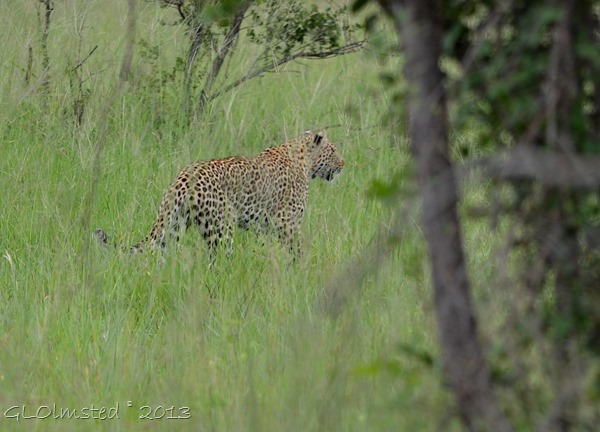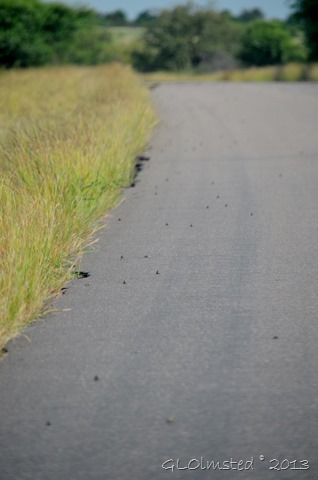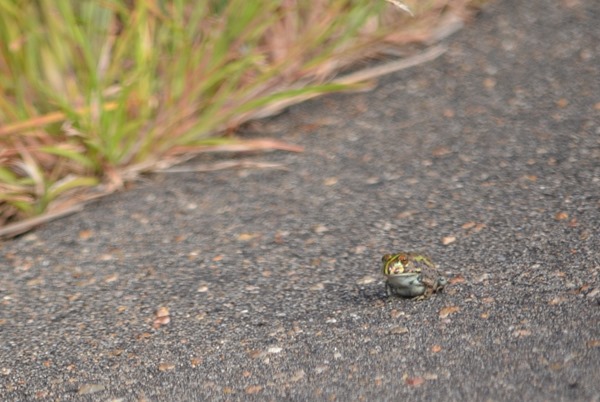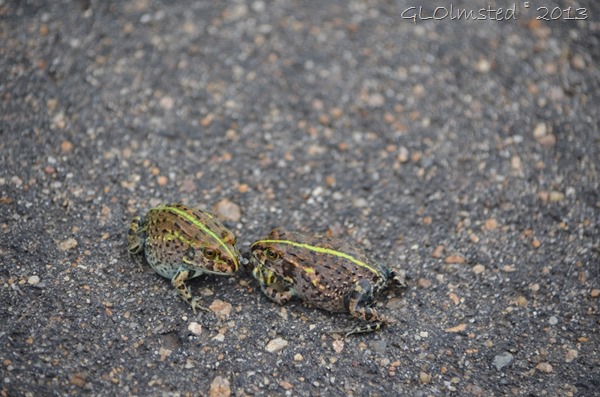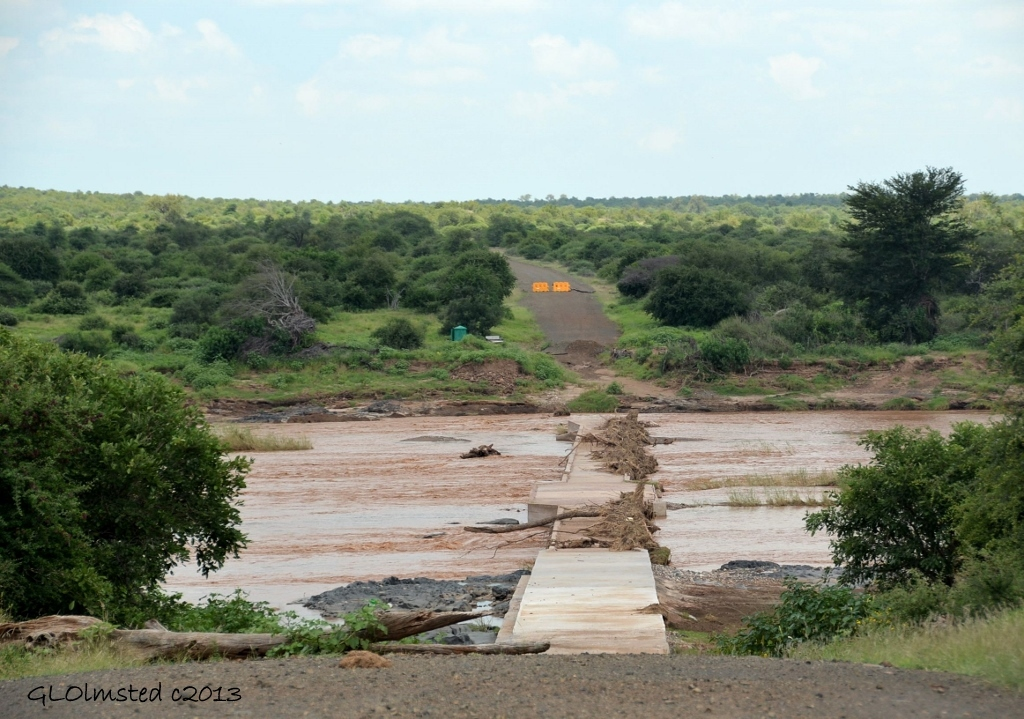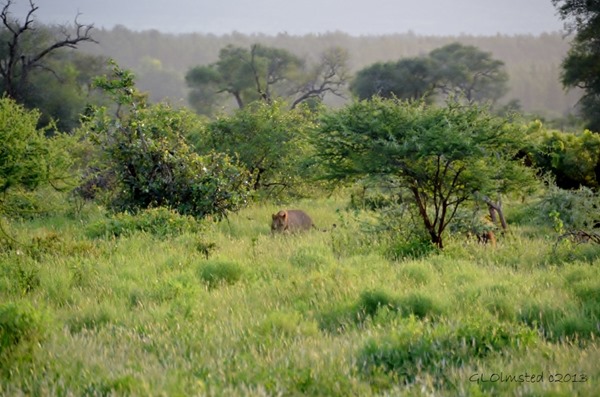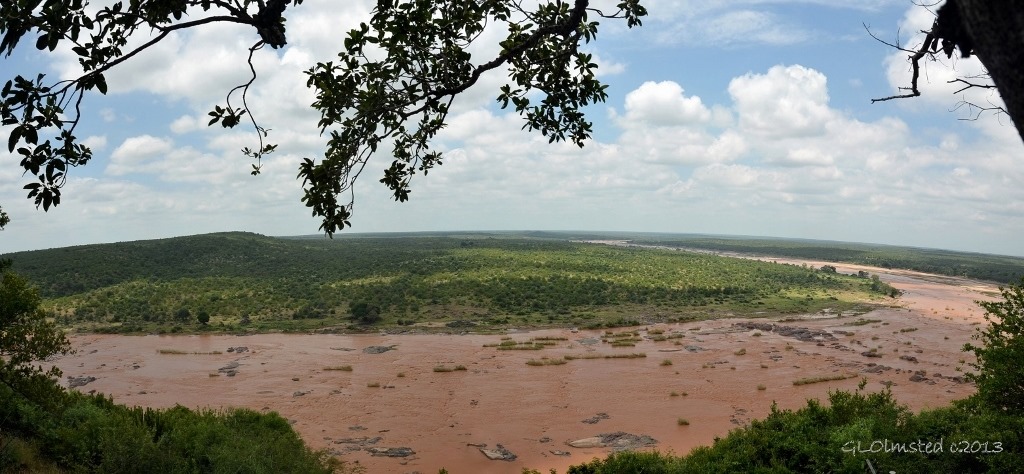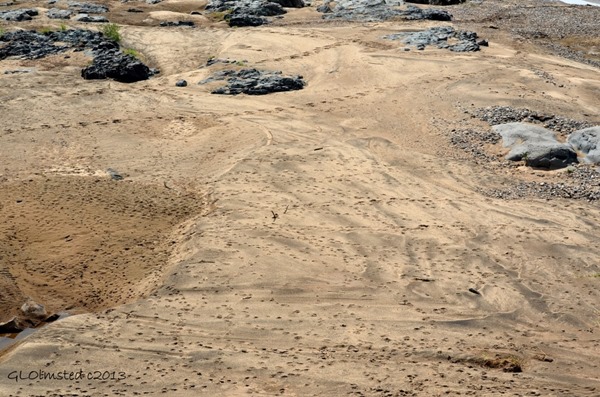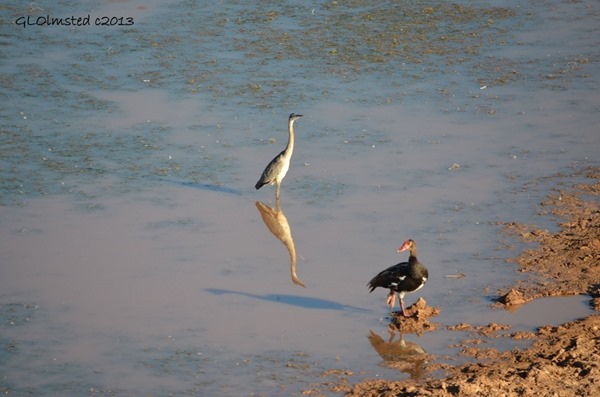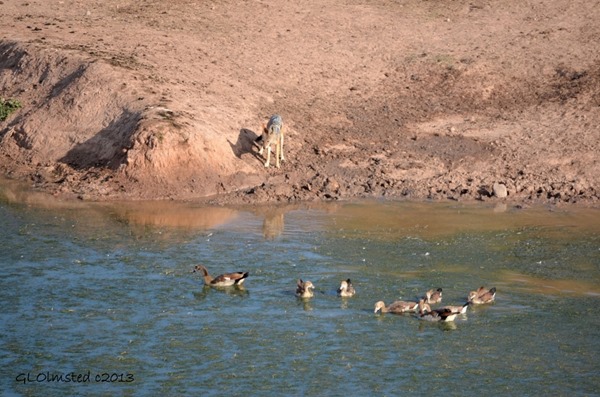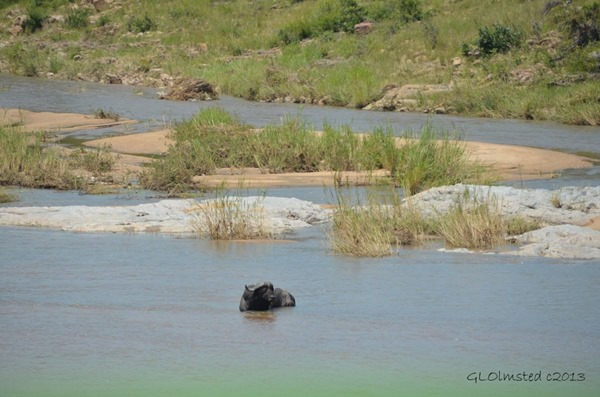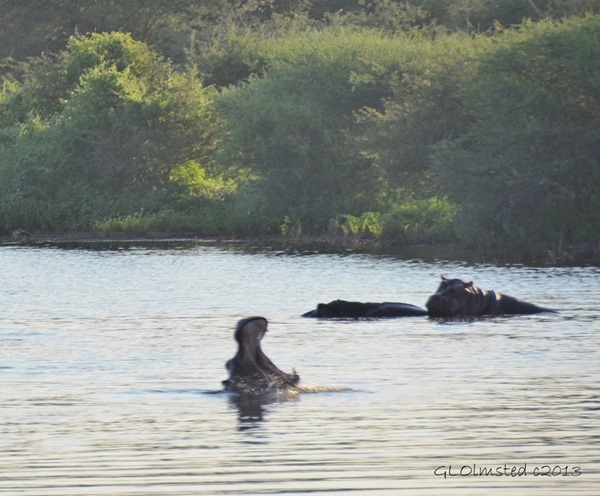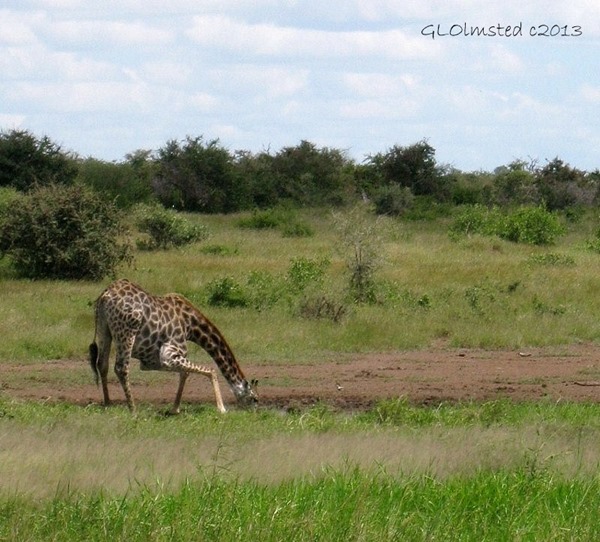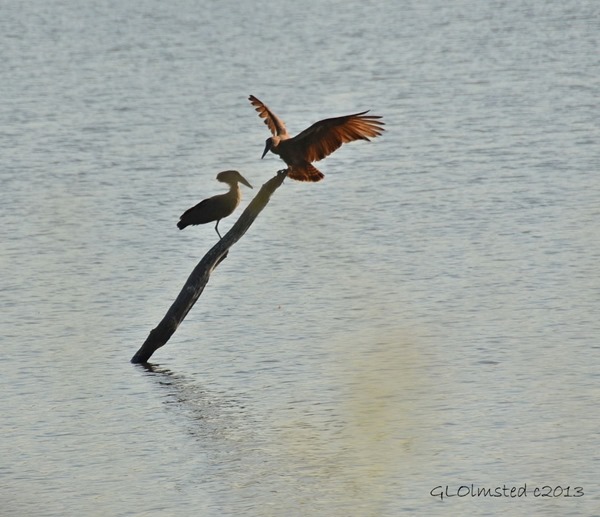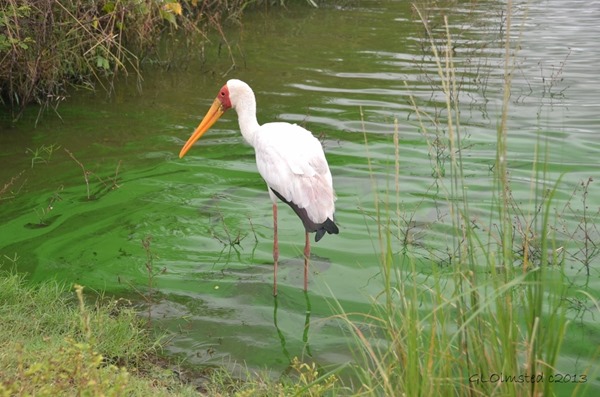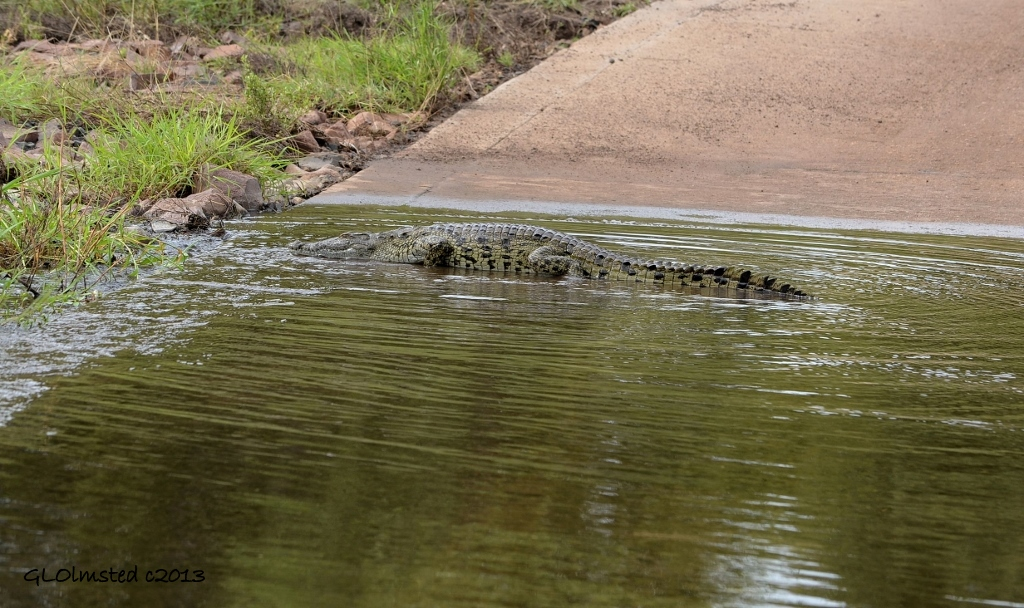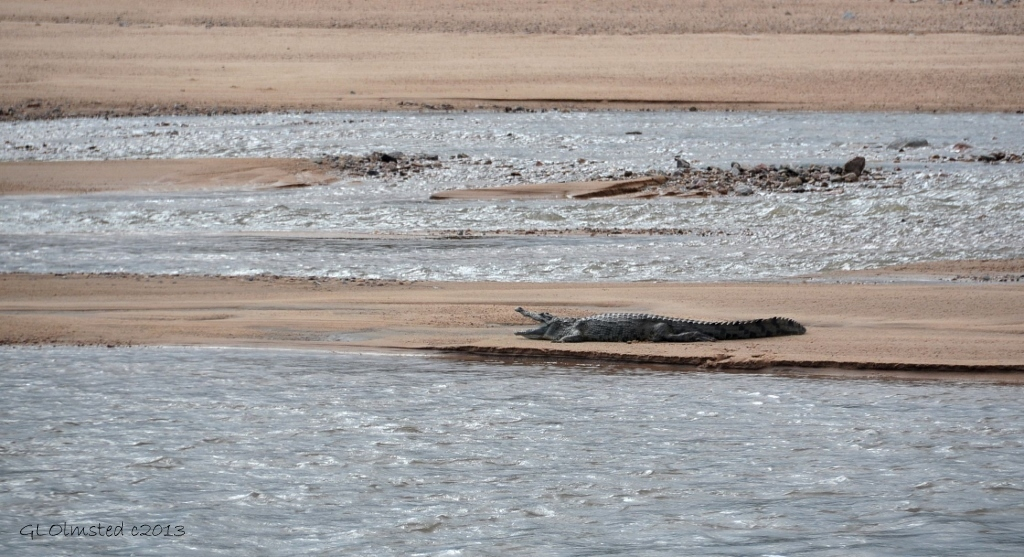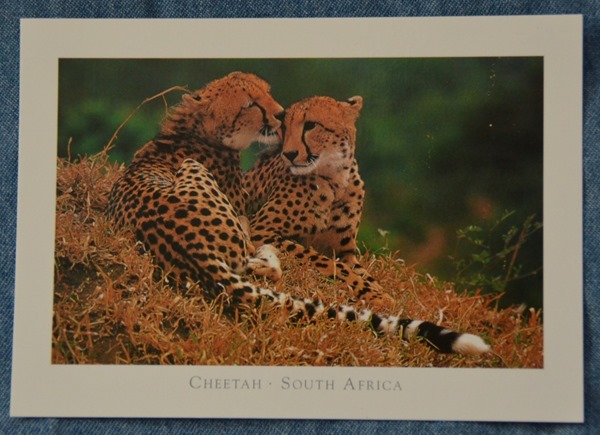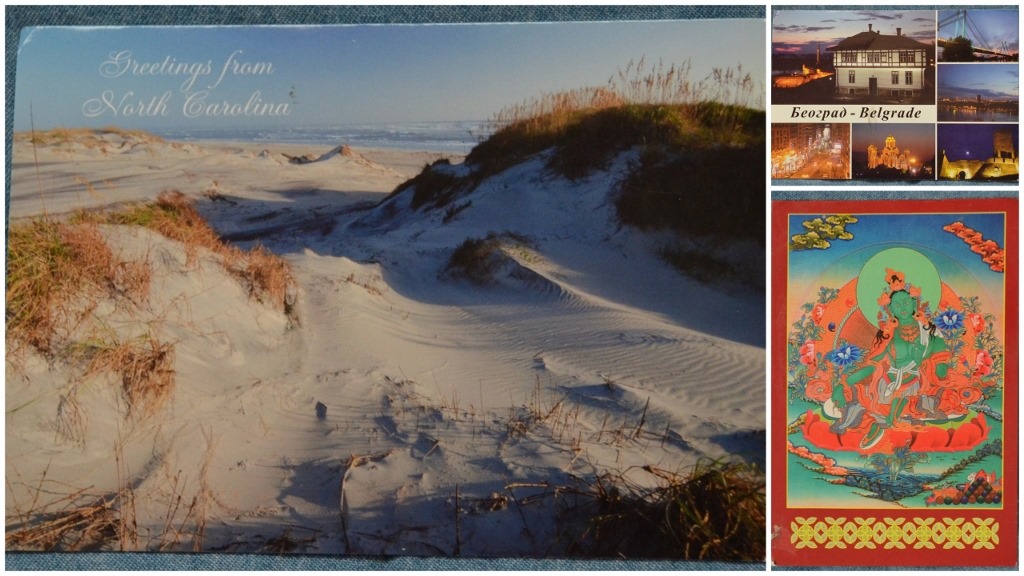I’m pretty sure you didn’t expect me to write about a frog invasion at Kruger National Park. And they may be toads, but are all from the same animal group.
Oops, that’s a leopard not a frog
Most people think of safari and The Big 5 at the largest wildlife park in South Africa. But there’s plenty of small and seemingly unusual activities as well.
While cruising the roads in search of wildlife, scanning the bush to both sides, high and low, searching for movement, an out of place color, something unusual. Then up ahead something small moving on the road, many somethings in fact. Two inch frogs heading our way and taking up both lanes.
No ID, yet
Difference between frogs & toads
Frogs need to live near water, have smooth moist skin, a narrow body and high round bulgy eyes. Toads do not need to live near water, have rough and bumpy skin, a wide body and low football shaped eyes. So you tell me what we saw.
A pair of frogs where fighting over some morsel and neither would give way
We stopped and didn’t want to drive through knowing we couldn’t avoid smashing some of them into the road. What a dilemma. It was obvious some other vehicles had driven through because of the mashed frog bodies. Did they even see them?
Although I thoroughly enjoy seeing the big wildlife sometimes the small animals provide something different and unusual. Like this prince, a red toad, found under my tent. And no I didn’t kiss it.
Last visit we were attacked by turtles and this time a frog invasion. I’m just glad we weren’t harried by hippos.
More coming about other wildlife seen in South Africa.

